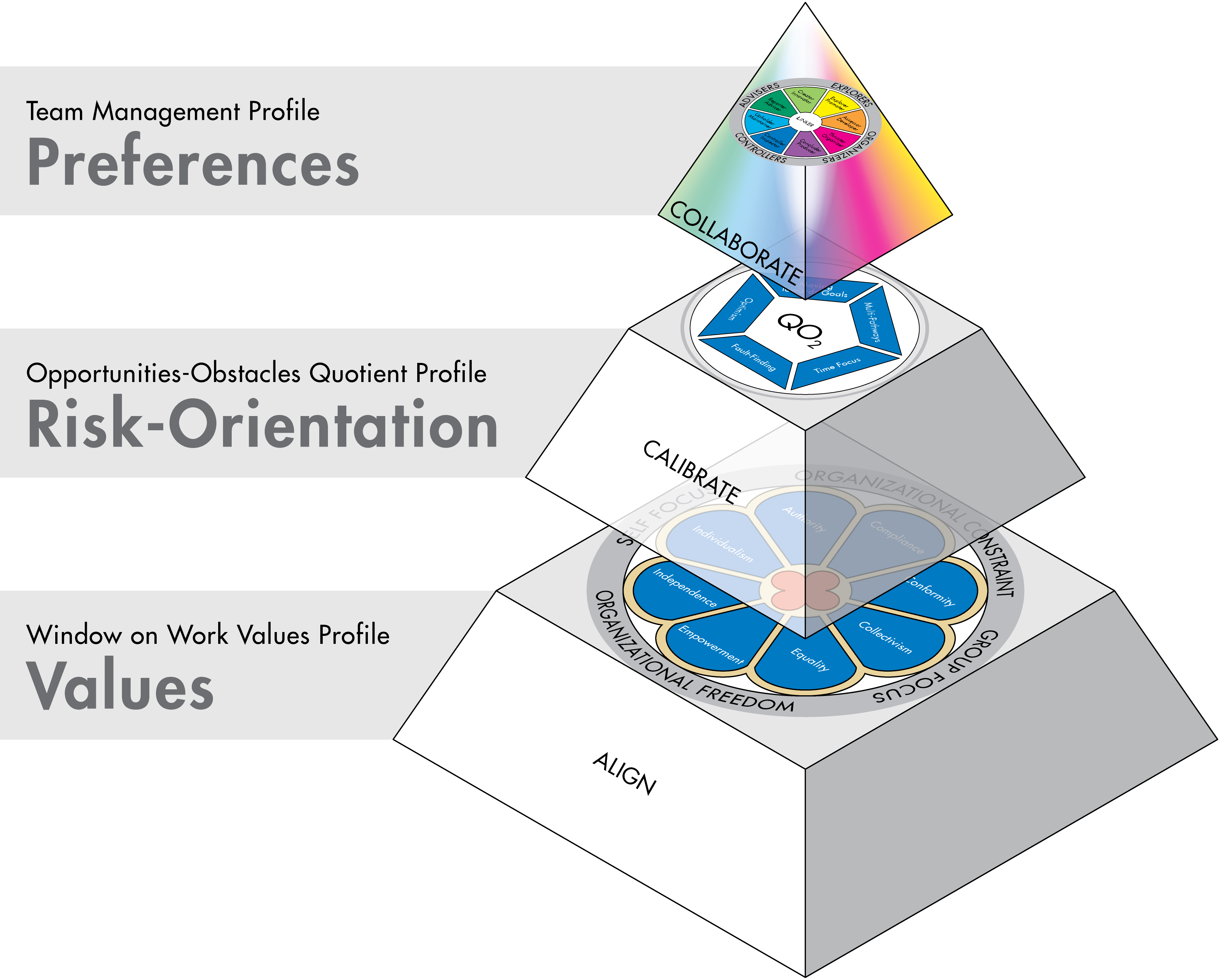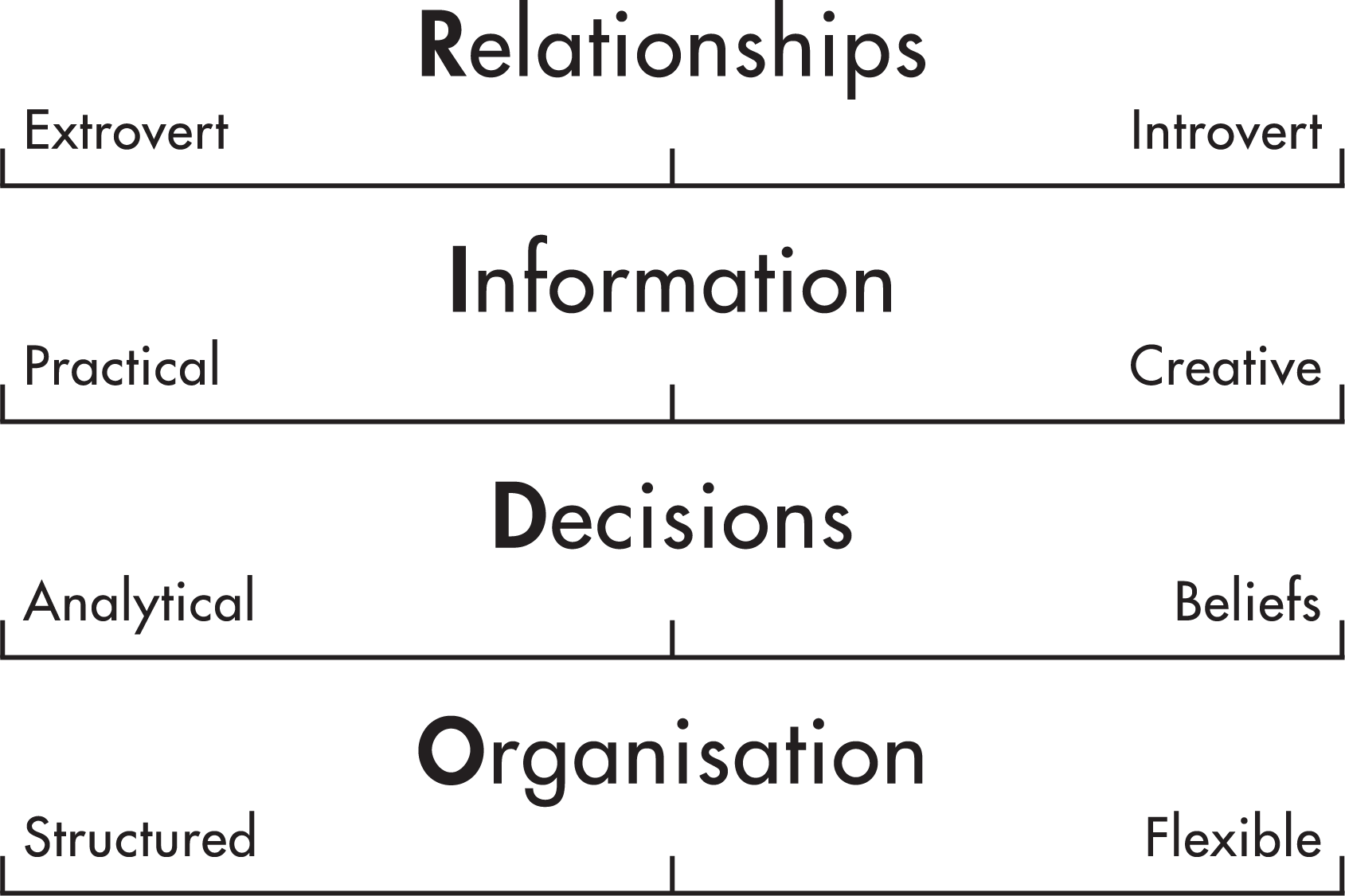The Language of Teamwork
High-performing teams share more than a goal – they share a common language. Team Management Systems (TMS) calls this the “Language of Teamwork”: shared mental models that keep everyone on the same page. With this common language in place, team members know exactly who is doing what, how each person prefers to work, and how all the pieces fit together. That clarity strengthens trust and alignment, ensuring tasks don’t fall through the cracks and communication flows smoothly even under pressure.
To make this shared language a reality, the TMS Language of Teamwork is built on a suite of interrelated models that together form its foundation. Each model is grounded in research and addresses a crucial aspect of high-performance teamwork, ensuring no critical dimension is overlooked.
In the sections below, we showcase each of the TMS models that make up the Language of Teamwork, illustrating how they work in concert to give teams a common vocabulary for success.
High-Energy Teams
Creating a high-energy, high-performance team starts with addressing eight fundamental areas that shape team success. These include understanding identity and purpose, assessing current performance, setting direction, planning execution, clarifying expectations, identifying support needs, measuring effectiveness, and recognizing contributions. Together, they form the foundation of the High-Energy Teams (HET) Model, a research-based framework from Team Management Systems.

Workplace Behavior Pyramid
The Workplace Behaviour Pyramid provides a powerful integrative model for understanding the layered drivers that shape behaviour in the workplace. Drawing on the research and frameworks of Team Management Systems—including the Team Management Profile (TMP), the Opportunities-Obstacles Quotient (QO2™) Profile, and the Window on Work Values (WoWV) Profile—this model offers a comprehensive view of the psychological drivers influencing individual and team performance.
Types of Work Wheel
Developed by Dr Charles Margerison and Dr Dick McCann, the Types of Work Wheel is a research-based framework that maps the core activities every team or organisation must address to perform effectively. As a foundational tool in the Team Management Systems approach, it helps leaders visualise how work is distributed, prioritise critical tasks, and maintain functional balance.

Four Work Preference Measures
The Four Work Preferences Scales—Relationships, Information, Decisions, and Organization (RIDO)—describe how personality influences the way people prefer to work. These preferences influence how individuals build relationships, process information, make decisions, and structure their work. They’re not fixed traits, but adaptable tendencies that help explain team dynamics. Understanding the diversity of work preferences enables teams to play to their strengths, navigate differences, and improve collaboration.
Team Management Wheel
The Team Management Wheel is a powerful and easy-to-understand model that illustrates how individuals prefer to contribute when working in a team. It identifies eight core team roles, each representing a distinct approach to getting work done. These roles are mapped against the eight Types of Work that are essential for team and business success, from generating ideas and promoting opportunities, to organizing processes and delivering results.
Linking Skills Model
Linking Skills are the activities and behaviors that managers and others need to exhibit in order to successfully integrate and coordinate the work of a team. These skills were identified through extensive interviews with teams and team leaders worldwide. Data collected from, for example, banking teams, engineering teams, administrative teams, marketing teams, production teams, and research teams, in the private and public sectors, highlighted a number of common elements that were responsible for integrating a team into a coherent 'whole'.
Risk Orientation Model
The Risk-Orientation Model forms the foundation of the Opportunities-Obstacles Quotient Profile (QO2), offering a practical way to understand how individuals balance their orientation towards risk. This balance plays a crucial role in how people respond to ambiguity, make decisions, and pursue goals in work environments.
In the field of personality psychology, the Big Five Model is a widely accepted framework that captures five core dimensions of human behaviour: Openness, Conscientiousness, Extraversion, Agreeableness, and Neuroticism. The first four are well-represented in workplace applications, particularly through tools like the Team Management Profile, which captures how individuals prefer to work and interact within teams.
The fifth dimension, however—often associated with emotional regulation and risk sensitivity—has traditionally remained the domain of clinical psychology. Yet it is precisely this domain of behaviour that often explains critical differences in how people engage with risk, innovation, and uncertainty in the workplace.
The Opportunities-Obstacles Quotient (QO2) brings this fifth dimension into the realm of practical team development and leadership coaching, providing a highly relevant lens for understanding how individuals and teams manage change, uncertainty, and forward momentum.
Window on Work Values
Values are concepts or beliefs that determine how we live our life. At work they are major influences on how individuals approach work. Values drive our decisions and cause us to summon up energy to preserve what we believe in or what we want to defend. As such they can be principal determinants of behavior and will impact our views about people, situations or events. When team members share the same values the team will have the energy to deliver outstanding performance. Where individual values clash, conflict will occur and teams are unlikely to reach their full potential.
This website uses cookies
We use cookies to personalise content, to provide social media features and to analyse our traffic. We also share information about your use of our site with our social media and analytics partners who may combine it with other information that you’ve provided to them or that they’ve collected from your use of their services. You consent to our cookies if you continue to use our website.

